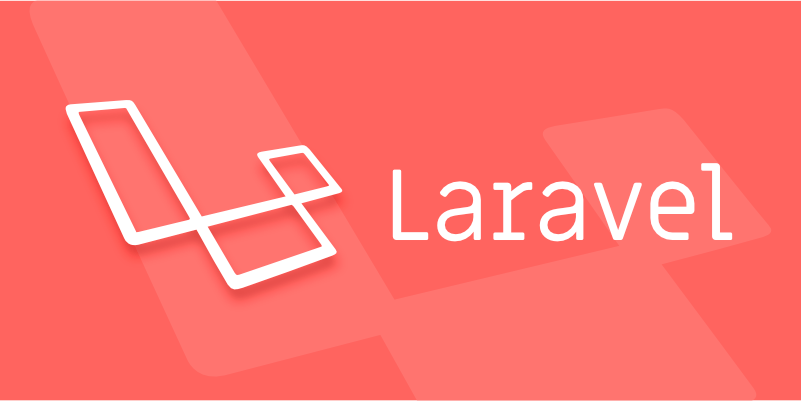Sending different types of notifications with Laravel
Jul 06, 2025 am 12:52 AMLaravel provides a clean and flexible way to send notifications via multiple channels like email, SMS, in-app alerts, and push notifications. You define notification channels in the via() method of a notification class, and implement specific methods like toMail(), toDatabase(), or toVonage() for each channel. 1. Use php artisan make:notification to create a notification class. 2. Specify delivery channels in the via() method. 3. Implement channel-specific methods such as toMail(), toDatabase(), or toVonage(). 4. For database notifications, run php artisan notifications:table and use unreadNotifications to retrieve and mark notifications as read. 5. For SMS, integrate with Vonage or Twilio, validate phone numbers, and format messages accordingly. This system allows customization per user and ensures smooth multi-channel notification handling.

If you're using Laravel and want to send different types of notifications — like email, SMS, in-app alerts, or even push notifications — there's a clean and flexible way to do it. Laravel’s built-in notification system makes this easy by letting you define multiple channels for each notification type.

How Laravel Notifications Work
At the core, Laravel notifications are sent through "channels". Each notification can be delivered via one or more channels like mail, database, broadcast, sms, etc. When you create a notification class using Artisan (php artisan make:notification), Laravel generates a file where you define how that notification should look and behave across different channels.

The key method is via(), which tells Laravel which delivery methods to use:
public function via($notifiable)
{
return ['mail', 'database'];
}You can customize this per notifiable user or model if needed. For example, some users might prefer SMS while others get email.

Common Notification Channels You Can Use
There are several default channels you can work with right out of the box:
- Mail – Send an email using the
toMail()method. - Database – Store the notification in your database using
toDatabase(). - Broadcast – Push real-time notifications using Laravel Echo and WebSockets.
- Slack – Send messages directly to Slack using
toSlack(). - SMS (via third-party services) – Usually handled with packages like Laravel Notifynder or Nexmo driver.
Each channel requires its own method in the notification class. For example, to send an email, you'll need a toMail() method returning a MailMessage instance.
If you're adding SMS, you’ll likely integrate with a service like Twilio or Vonage, and use their Laravel SDKs to format and send messages.
Setting Up Database Notifications
Storing notifications in the database is useful when you want users to see a history of what’s been sent. To enable this, first run:
php artisan notifications:table php artisan migrate
This creates a notifications table linked to your notifiable model (usually User). In your notification class, define the toDatabase() method:
public function toDatabase($notifiable)
{
return [
'message' => 'You have a new follower.',
'link' => url('/profile/'.$notifiable->id),
];
}Then, in your controller or front-end logic, you can fetch unread notifications like this:
$notifications = auth()->user()->unreadNotifications;
And mark them as read when displayed:
auth()->user()->unreadNotifications->markAsRead();
This is helpful for dashboards or dropdown menus showing recent activity.
Sending SMS Notifications
Laravel doesn’t include SMS support by default, but it’s easy to add using the Vonage (formerly Nexmo) driver or a package like Laravel SMS or Twilio integration.
Once set up, you can use the via() method to include vonage or twilio:
public function via($notifiable)
{
return ['vonage'];
}Then implement the toVonage() method:
public function toVonage($notifiable)
{
return (new VonageMessage)
->content('Your order has shipped!');
}Make sure your notifiable model has a routeNotificationForVonage() method returning the phone number.
Some tips:
- Always validate phone numbers before sending.
- Keep message content short and clear.
- Consider rate limits and retry strategies.
That’s basically it. Once you understand how channels work and how to structure each notification, sending different types works smoothly. Just plug in the right drivers, format your messages accordingly, and let Laravel handle the rest.
The above is the detailed content of Sending different types of notifications with Laravel. For more information, please follow other related articles on the PHP Chinese website!

Hot AI Tools

Undress AI Tool
Undress images for free

Undresser.AI Undress
AI-powered app for creating realistic nude photos

AI Clothes Remover
Online AI tool for removing clothes from photos.

Clothoff.io
AI clothes remover

Video Face Swap
Swap faces in any video effortlessly with our completely free AI face swap tool!

Hot Article

Hot Tools

Notepad++7.3.1
Easy-to-use and free code editor

SublimeText3 Chinese version
Chinese version, very easy to use

Zend Studio 13.0.1
Powerful PHP integrated development environment

Dreamweaver CS6
Visual web development tools

SublimeText3 Mac version
God-level code editing software (SublimeText3)

Hot Topics
 How to test Laravel API interface?
May 22, 2025 pm 09:45 PM
How to test Laravel API interface?
May 22, 2025 pm 09:45 PM
Efficient methods for testing Laravel API interfaces include: 1) using Laravel's own testing framework and third-party tools such as Postman or Insomnia; 2) writing unit tests, functional tests and integration tests; 3) emulating a real request environment and managing database status. Through these steps, the stability and functional integrity of the API can be ensured.
 How to customize Laravel's user authentication logic?
May 22, 2025 pm 09:36 PM
How to customize Laravel's user authentication logic?
May 22, 2025 pm 09:36 PM
Custom Laravel user authentication logic can be implemented through the following steps: 1. Add additional verification conditions when logging in, such as mailbox verification. 2. Create a custom Guard class and expand the authentication process. Custom authentication logic requires a deep understanding of Laravel's authentication system and pay attention to security, performance and maintenance.
 How to create Laravel package (Package) development?
May 29, 2025 pm 09:12 PM
How to create Laravel package (Package) development?
May 29, 2025 pm 09:12 PM
The steps to create a package in Laravel include: 1) Understanding the advantages of packages, such as modularity and reuse; 2) following Laravel naming and structural specifications; 3) creating a service provider using artisan command; 4) publishing configuration files correctly; 5) managing version control and publishing to Packagist; 6) performing rigorous testing; 7) writing detailed documentation; 8) ensuring compatibility with different Laravel versions.
 Laravel integration with social media login (OAuth)
May 22, 2025 pm 09:27 PM
Laravel integration with social media login (OAuth)
May 22, 2025 pm 09:27 PM
Integrating social media login in the Laravel framework can be achieved by using the LaravelSocialite package. 1. Install the Socialite package: use composerrequirelaravel/socialite. 2. Configure the service provider and alias: add relevant configuration in config/app.php. 3. Set API credentials: Configure social media API credentials in .env and config/services.php. 4. Write controller method: Add redirection and callback methods to handle social media login process. 5. Handle FAQs: Ensure user uniqueness, data synchronization, security and error handling. 6. Optimization practice:
 How to implement password reset function in Laravel?
May 22, 2025 pm 09:42 PM
How to implement password reset function in Laravel?
May 22, 2025 pm 09:42 PM
Implementing password reset function in Laravel requires the following steps: 1. Configure the email service and set relevant parameters in the .env file; 2. Define password reset routes in routes/web.php; 3. Customize email templates; 4. Pay attention to email sending problems and the validity period of tokens, and adjust the configuration if necessary; 5. Consider security to prevent brute-force attacks; 6. After the password reset is successful, force the user to log out of other devices.
 Common security threats and protection measures for Laravel applications
May 22, 2025 pm 09:33 PM
Common security threats and protection measures for Laravel applications
May 22, 2025 pm 09:33 PM
Common security threats in Laravel applications include SQL injection, cross-site scripting attacks (XSS), cross-site request forgery (CSRF), and file upload vulnerabilities. Protection measures include: 1. Use EloquentORM and QueryBuilder for parameterized queries to avoid SQL injection. 2. Verify and filter user input to ensure the security of output and prevent XSS attacks. 3. Set CSRF tokens in forms and AJAX requests to protect the application from CSRF attacks. 4. Strictly verify and process file uploads to ensure file security. 5. Regular code audits and security tests are carried out to discover and fix potential security vulnerabilities.
 What is Middleware in Laravel? How to use it?
May 29, 2025 pm 09:27 PM
What is Middleware in Laravel? How to use it?
May 29, 2025 pm 09:27 PM
Middleware is a filtering mechanism in Laravel that is used to intercept and process HTTP requests. Use steps: 1. Create middleware: Use the command "phpartisanmake:middlewareCheckRole". 2. Define processing logic: Write specific logic in the generated file. 3. Register middleware: Add middleware in Kernel.php. 4. Use middleware: Apply middleware in routing definition.
 Laravel Page Cache Policy
May 29, 2025 pm 09:15 PM
Laravel Page Cache Policy
May 29, 2025 pm 09:15 PM
Laravel's page caching strategy can significantly improve website performance. 1) Use cache helper functions to implement page caching, such as the Cache::remember method. 2) Select the appropriate cache backend, such as Redis. 3) Pay attention to data consistency issues, and you can use fine-grained caches or event listeners to clear the cache. 4) Further optimization is combined with routing cache, view cache and cache tags. By rationally applying these strategies, website performance can be effectively improved.






